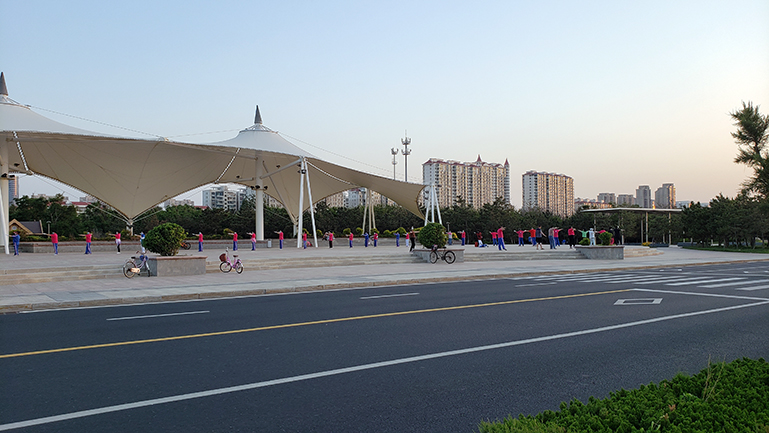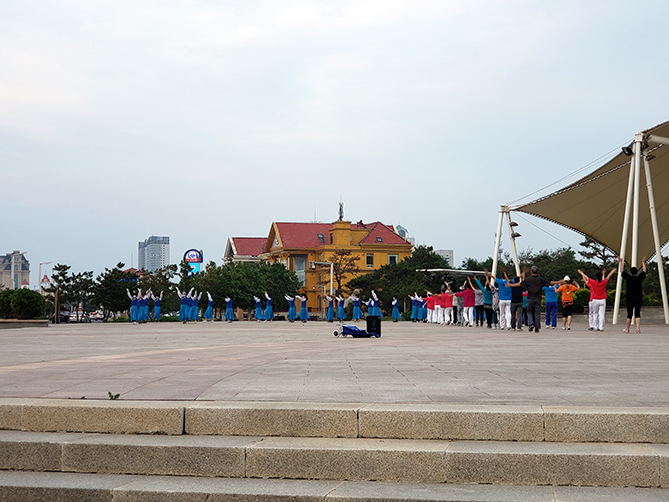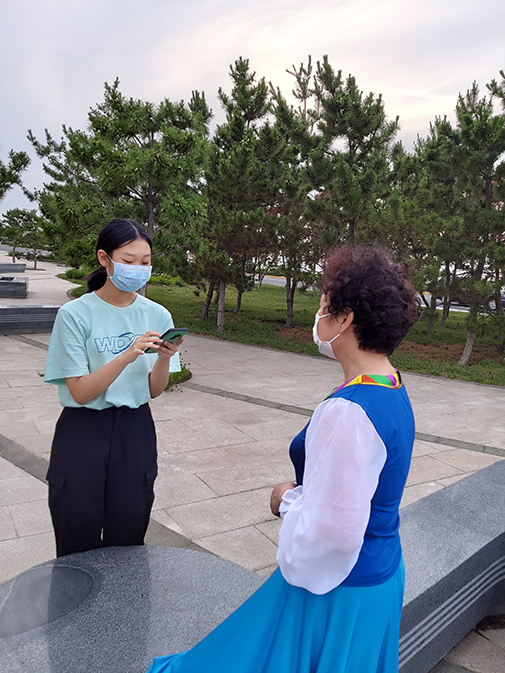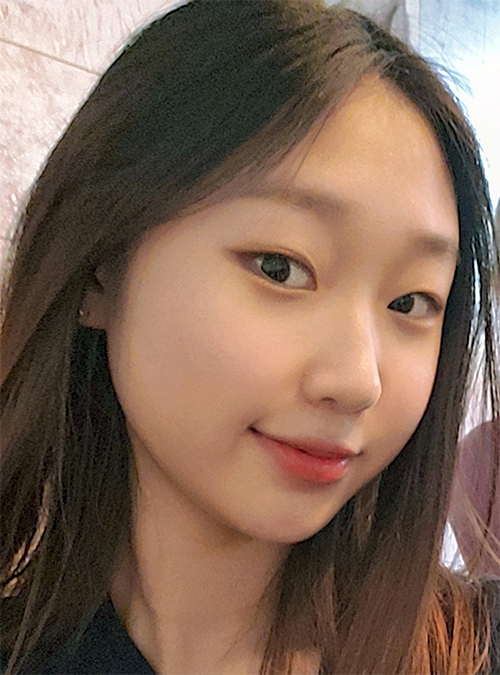As dusk settles over Fushan district, rambunctious music pierces through the silence, signaling the start of dancing in the southern suburbs of Yantai, China. Groups of usually middle-aged women gather at a public space and start to dance enthusiastically. Whether waltzing, line-dancing, or rock n' roll--or free--style bumping and grinding, 广场舞 (Guangchangwu), or “square dance,” attracts millions of people to join every day. As a healthy and enjoyable evening routine, Guangchangwu has become a national nighttime hobby in both urban and rural China.

It is easy to spot Guangchangwu at nightfall in Yantai while walking along the beach, jogging at a public park, or shopping near a public square. Near Jinxiatan Beach, groups of people come out to square dance every day from 6:50 to 7:50 pm, usually after dinner. While reasons vary, most of the women who square dance say that the practice began during the Cultural Revolution, when folk dances such as yangge were widely performed to inspire a plentiful harvest. Contrary to those who say that Guangchangwu is a form of nostalgia, others argue that contemporary square dancing began a few decades later, when middle-aged women forced into retirement started dancing for something fun to do. No matter what the believed origin, Guangchangwu is a popular exercise hobby for all who practice it.

The women who square dance are called the “dancing grannies” in both the public media and the local community. In an interview, Ms. Wen explained how the majority of these grannies square dance to “train their bodies, interact with each other, and enjoy the atmosphere.” She also said that “Guangchangwu is a perfect exercise to do during the evening, particularly for aged retirees like me who have a lot of spare time.”

Apart from the fact that it is a method of physical exercise and a natural result of a rising standard of living, the noise pollution created by Guangchangwu, however, provokes diverse reactions. “The louder the music, the more fun it is,” said Wen, who believes that the intensity of the music is a factor for enjoyment and excitement. For square dancers, particularly retirees or people going through personal hardship, music is a way to release any stress. Despite the fact that the noise is quite loud, some dancers say that loudness is an essential element of their dance which should not be changed. Yet sometimes, it may seem that the overenthusiasm of participants has dealt it a harmful blow with disputes over noise and venues. It has even come to a certain decree that square dancing is mainly for the elderlies, especially women. Today, as the numbers of square dancing participants are increasing, it is also true that more conflicts are coming into view.
Today, more and more people, with masks on, look to square dancing for comfort. Through dancing, they show that its collective nature makes it an important part of Chinese culture. Although Guangchangwu helps revitalize the Chinese community, there still are steps to climb to reach a fair consensus for all, where future generations come to understand and accept different values and influences.

Angela Kim
Freshman (Grade 9)
Yantai American School

